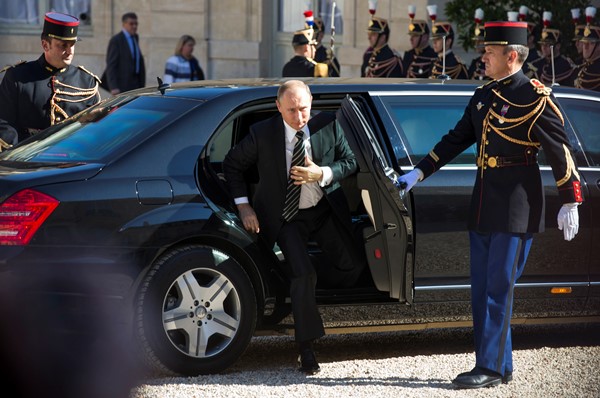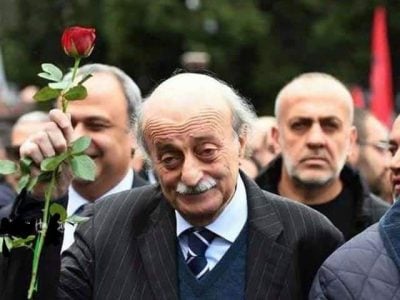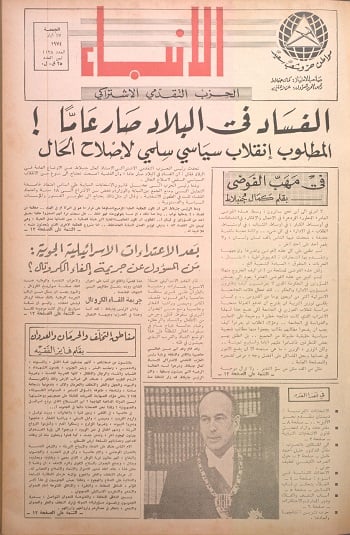What is Putin’s plan in Syria?
Andrew Wood / Prospect
3 أكتوبر 2015

The purpose of Russia’s direct military intervention in Syria is clear and driven by tactical considerations. It is also impractical.
President Putin has made it clear from the outset that he is committed to President Assad’s continued rule in Damascus, and repeated as much during his recent address to the United Nations General Assembly. Russia’s Federal Council gave him its unanimous agreement to use force, at his request and as a sign of Russia’s determination to combat terrorism in Syria. Action followed immediately, with scant warning to Western and Middle Eastern forces operating in the theatre, and with only the most cursory consideration as to what Russia and others might consider to be “terrorist forces.” Russian actions show clearly—and unsurprisingly—that all opponents of the Assad regime are terrorists for Putin, with Islamic State low on the present target list.
The decision to use the forces that Russia has built up in Syria was rooted in the need, as Moscow saw it, to promptly counter the erosion of territory still under Assad’s control and, as soon as it might become possible, to extend it. Russian intervention was also supposed to force the United States, in particular, to acknowledge Moscow’s right to have a major say in the area, and to expose the uncertainty inherent in the coalition’s policies of fighting ISIS while also supporting non-ISIS resistance to the Assad regime. It has also been proposed that Moscow hopes to somehow leverage action in Syria, either to disguise a partial climb-down over Ukraine or to persuade the West that it needs to tone down its resistance to Moscow’s pressure on Kiev, though the latter idea seems far-fetched.
The Kremlin will need a quick result if it is to both achieve these purposes and satisfy the Russian public. A swift and effective intervention that showed that Moscow can act independently (even, arguably, in defiance) of the United States, and that it can do so without endangering its armed forces would be a domestic bonus. But the sort of bombardment that is typical of Russian military practice is unlikely to produce such a result. The more protracted the Russian engagement becomes, the greater the risk of Russian military casualties, and the greater the consequent risk that Moscow will have to choose between committing combat troops or retrenchment.
By siding with the Assad regime even more clearly than before, Russia has allied itself more closely with Iran. A quick result in Syria might help to mitigate negative reactions, but the Arab world is unlikely to take kindly to Russia rescuing an Alawite regime dependent on the continued persecution of the citizens it claims as its own. Western policy-making may have been uncertain and even, viewed from Moscow, weak minded, but the West is unlikely to accept that it must now join in the fight to save Assad from his own iniquity.
The choices before the Kremlin will presumably change in due course. If Putin’s present gamble proves ill-judged, it is conceivable that he will be tempted by the alternative of edging Assad towards exile. But the course that he has embarked upon will make it more difficult for him to engineer what would widely be seen as a climb-down. The implication would also be that he must accept the need to collaborate with the wider coalition in seeking a solution to the Syrian catastrophe. That would be in Russia’s national interest, but not, it would seem, his own.
 عن أمل جنبلاط المتجدد: لبنان يستحق النضال
عن أمل جنبلاط المتجدد: لبنان يستحق النضال
 صحافيون أم عرّافون!
صحافيون أم عرّافون!
 ماذا يجري داخل أروقة بيت الكتائب المركزي؟
ماذا يجري داخل أروقة بيت الكتائب المركزي؟


 عن الخرائط التي تُرسم والإتفاقات التي تتساقط!
عن الخرائط التي تُرسم والإتفاقات التي تتساقط!
 “الإنحراف في الحياة”/ بقلم كمال جنبلاط
“الإنحراف في الحياة”/ بقلم كمال جنبلاط
 هاشتاغ #صار_الوقت يحل أولاً في حلقة جنبلاط
هاشتاغ #صار_الوقت يحل أولاً في حلقة جنبلاط
 طاولة نقاش عن أزمة الصحافة في جامعة AUST
طاولة نقاش عن أزمة الصحافة في جامعة AUST
 عبدالله: ليظهر لنا وزير مكافحة الفساد حرصه في صفقات البواخر والفيول
عبدالله: ليظهر لنا وزير مكافحة الفساد حرصه في صفقات البواخر والفيول
 عبدالله: غريب أمر وزارة مكافحة الفساد!
عبدالله: غريب أمر وزارة مكافحة الفساد!

 Comment to Uri Avnery: How Sad What Is Looming Ahead
Comment to Uri Avnery: How Sad What Is Looming Ahead
 “Not Enough!”
“Not Enough!”
 … لمن لم يقرأ يوسف البعيني/ بقلم وسام شيّا
… لمن لم يقرأ يوسف البعيني/ بقلم وسام شيّا
 كمال جنبلاط في مولده الأول بعد المائة: تعاليمه وأفكاره ما زالت الحلّ/بقلم عزيز المتني
كمال جنبلاط في مولده الأول بعد المائة: تعاليمه وأفكاره ما زالت الحلّ/بقلم عزيز المتني
 رئيس حزب/ وليس (… سابقاً)/ بقلم د. خليل احمد خليل
رئيس حزب/ وليس (… سابقاً)/ بقلم د. خليل احمد خليل
 التوازن السياسي في لبنان
التوازن السياسي في لبنان
 لبنان… مشاريع انقلابية مؤجلة
لبنان… مشاريع انقلابية مؤجلة
 جنبلاط وحَمَلة أختام الكاوتشوك
جنبلاط وحَمَلة أختام الكاوتشوك
 Le Liban est un symbole de tolérance
Le Liban est un symbole de tolérance
 Our Automated Future
Our Automated Future
 The True Origins of ISIS
The True Origins of ISIS
 Les Misérables vs. Macron
Les Misérables vs. Macron
 عذراً أيها المعلم/ بقلم مهج شعبان
عذراً أيها المعلم/ بقلم مهج شعبان
 رساله الى المعلم / بقلم ابو عاصم
رساله الى المعلم / بقلم ابو عاصم
 إلى روح القائد والمعلم كمال جنبلاط/ بقلم أنور الدبيسي
إلى روح القائد والمعلم كمال جنبلاط/ بقلم أنور الدبيسي
 أسرار وعناوين الصحف ليوم الجمعة 14 كانون الاول 2018
أسرار وعناوين الصحف ليوم الجمعة 14 كانون الاول 2018














